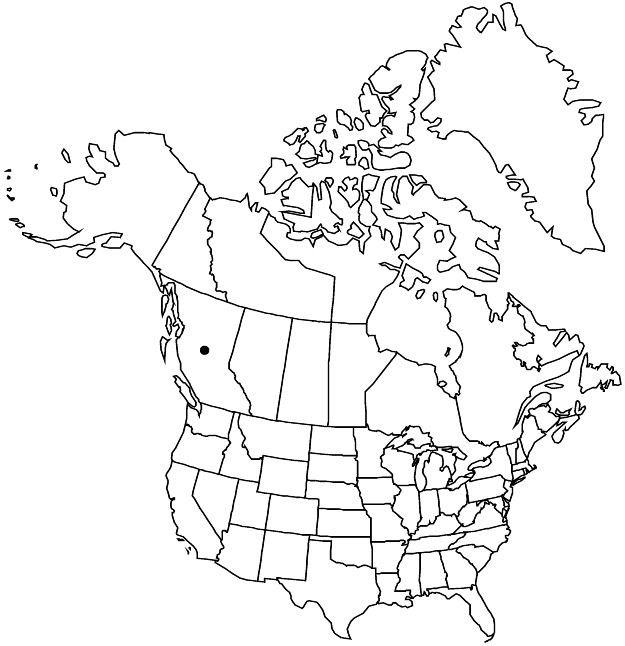Difference between revisions of "Cotoneaster crispii"
Gard. Chron., ser. 3, 83: 44. 1928. as hybrid
FNA>Volume Importer |
imported>Volume Importer |
||
| (5 intermediate revisions by 2 users not shown) | |||
| Line 6: | Line 6: | ||
|place=3, 83: 44. 1928 | |place=3, 83: 44. 1928 | ||
|year=1928 | |year=1928 | ||
| + | |other_info_on_pub=as hybrid | ||
}} | }} | ||
|common_names=Crisp’s cotoneaster | |common_names=Crisp’s cotoneaster | ||
| Line 28: | Line 29: | ||
|elevation=0–200 m | |elevation=0–200 m | ||
|distribution=B.C.;Asia (China). | |distribution=B.C.;Asia (China). | ||
| + | |introduced=true | ||
|discussion=<p><i>Cotoneaster crispii</i> was collected recently wild in Yunnan. The species is often treated as a hybrid of garden origin between <i>C. frigidus</i> and <i>C. pannosus</i>. Plants of it differ from those of <i>C. frigidus</i> in their smaller and persistent leaves, and it has larger leaves and fruits than <i>C. pannosus</i>. The species was overlooked in the Flora of China (L. Lingdi and A. R. Brach 2003).</p> | |discussion=<p><i>Cotoneaster crispii</i> was collected recently wild in Yunnan. The species is often treated as a hybrid of garden origin between <i>C. frigidus</i> and <i>C. pannosus</i>. Plants of it differ from those of <i>C. frigidus</i> in their smaller and persistent leaves, and it has larger leaves and fruits than <i>C. pannosus</i>. The species was overlooked in the Flora of China (L. Lingdi and A. R. Brach 2003).</p> | ||
|tables= | |tables= | ||
| Line 37: | Line 39: | ||
-->{{#Taxon: | -->{{#Taxon: | ||
name=Cotoneaster crispii | name=Cotoneaster crispii | ||
| − | |||
|authority=Exell | |authority=Exell | ||
|rank=species | |rank=species | ||
| Line 53: | Line 54: | ||
|publication year=1928 | |publication year=1928 | ||
|special status=Introduced | |special status=Introduced | ||
| − | |source xml=https:// | + | |source xml=https://bitbucket.org/aafc-mbb/fna-data-curation/src/2e0870ddd59836b60bcf96646a41e87ea5a5943a/coarse_grained_fna_xml/V9/V9_758.xml |
|subfamily=Rosaceae subfam. Amygdaloideae | |subfamily=Rosaceae subfam. Amygdaloideae | ||
|tribe=Rosaceae tribe Gillenieae | |tribe=Rosaceae tribe Gillenieae | ||
Latest revision as of 22:59, 5 November 2020
Shrubs or trees, 1.5–6 m. Stems narrowly erect, arching; branches spiraled, purple-black, initially silky tomentose. Leaves persistent, rarely semipersistent (in harsh winters); petiole 5–7 mm, tomentose; blade elliptic, sometimes ovate, 25–46 × 11–28 mm, subcoriaceous or coriaceous, base cuneate, margins flat, veins 4–7, superficial, rarely faintly sunken, apex acute, abaxial surfaces initially whitish tomentose, becoming glabrate, adaxial green to dark green, dull, slightly glaucous, flat between lateral veins, initially sparsely pilose. Inflorescences on fertile shoots 40–70 mm with 4 leaves, 7–25-flowered, compact to ± lax. Pedicels 1–7 mm, silky tomentose. Flowers (7–)10–11 mm diam.; buds white; hypanthium funnelform, silky tomentose; sepals: margins villous, apex cuspidate or acuminate, surfaces silky tomentose; petals spreading, white, rarely with hair tuft; stamens 20, filaments white, anthers reddish purple; styles (1 or)2. Pomes red to dark red, globose or subglobose, 6–8 × 6–8 mm, dull or slightly shiny, slightly glaucous, glabrescent; sepals flat, depressed, or incurved, densely villous; navel open; style remnants at apex. Pyrenes (1 or)2. 2n = 51 (Germany).
Phenology: Flowering Jun–Jul; fruiting Oct–Feb.
Habitat: Thickets, building edges, cracks in pavement
Elevation: 0–200 m
Distribution

Introduced; B.C., Asia (China).
Discussion
Cotoneaster crispii was collected recently wild in Yunnan. The species is often treated as a hybrid of garden origin between C. frigidus and C. pannosus. Plants of it differ from those of C. frigidus in their smaller and persistent leaves, and it has larger leaves and fruits than C. pannosus. The species was overlooked in the Flora of China (L. Lingdi and A. R. Brach 2003).
Selected References
None.